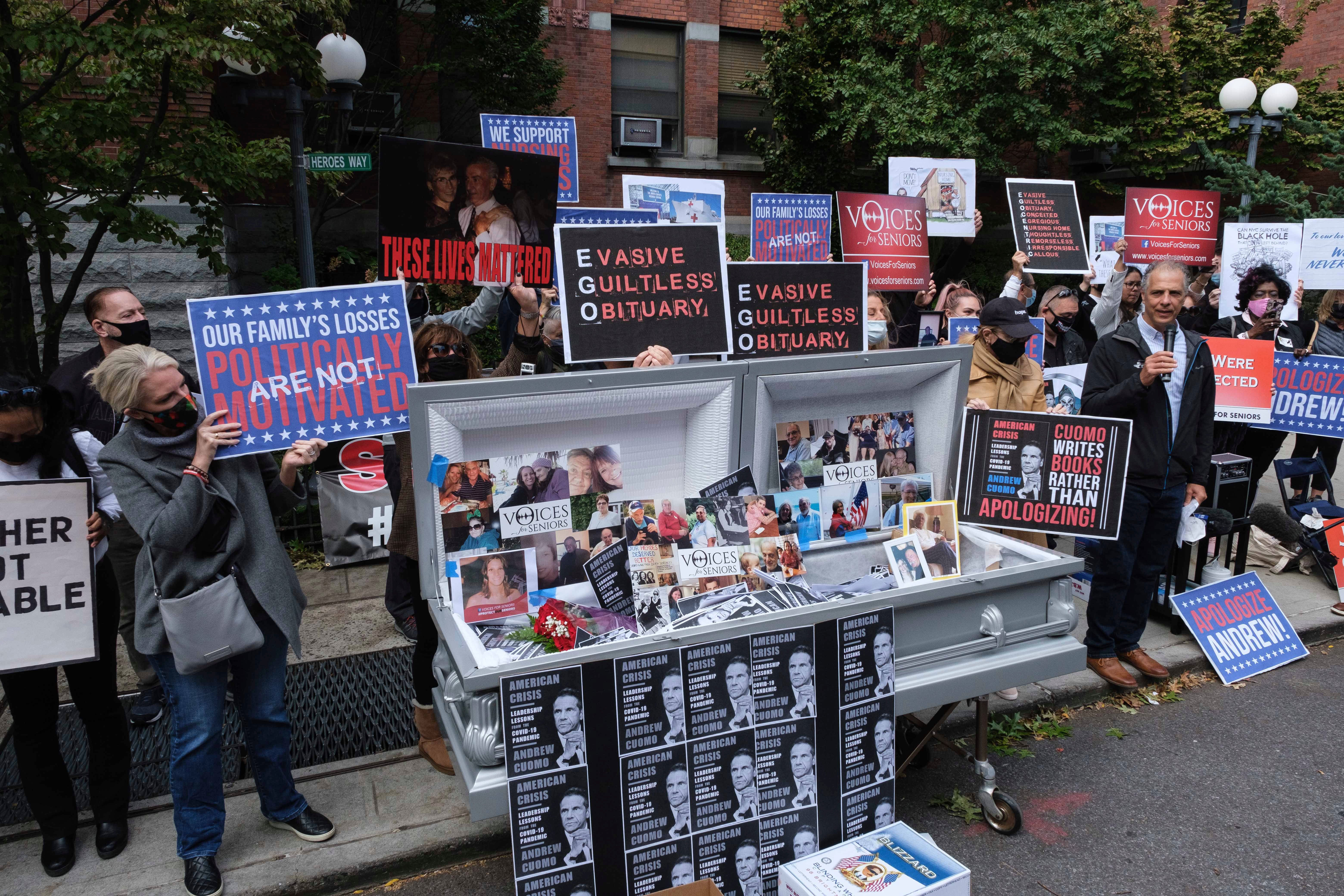Reports: NY officials altered count of nursing home deaths
The Wall Street Journal and The New York Times report that the true number of people who had died in nursing homes in New York was altered by Gov. Andrew Cuomo’s top aides in a state Health Department report in July

Your support helps us to tell the story
From reproductive rights to climate change to Big Tech, The Independent is on the ground when the story is developing. Whether it's investigating the financials of Elon Musk's pro-Trump PAC or producing our latest documentary, 'The A Word', which shines a light on the American women fighting for reproductive rights, we know how important it is to parse out the facts from the messaging.
At such a critical moment in US history, we need reporters on the ground. Your donation allows us to keep sending journalists to speak to both sides of the story.
The Independent is trusted by Americans across the entire political spectrum. And unlike many other quality news outlets, we choose not to lock Americans out of our reporting and analysis with paywalls. We believe quality journalism should be available to everyone, paid for by those who can afford it.
Your support makes all the difference.Top aides to Gov. Andrew Cuomo altered a state Health Department report to obscure the true number of people killed by COVID-19 in the state's nursing homes The Wall Street Journal and The New York Times reported late Thursday.
The aides, including the secretary to the governor, Melissa DeRosa, pushed state health officials to edit the July report so only residents who died inside long-term care facilities, and not those who became ill there and later died at a hospital, were counted, the newspapers reported, citing documents and people with knowledge of the administration's internal discussions.
The report was designed and released to rebut criticism of Cuomo over a March 25 directive that barred nursing homes from rejecting recovering coronavirus patients being discharged from hospitals. Some nursing homes complained at the time that the policy could help spread the virus.
The report concluded the policy played no role in spreading infection.
The state's analysis was based partly on what officials acknowledged at the time was an imprecise statistic. The report said 6,432 people had died in the state's nursing homes.
State officials acknowledged that the true number of deaths was higher because of the exclusion of patients who died in hospitals, but they declined at the time to give any estimate of that larger number of deaths, saying the numbers still needed to be verified.
The Times and Journal reported that, in fact, the original drafts of the report had included that number, then more than 9,200 deaths, until Cuomo's aides said it should be taken out.
State officials insisted Thursday that the edits were made because of concerns about accuracy, not to protect Cuomo's reputation.
“While early versions of the report included out of facility deaths, the COVID task force was not satisfied that the data had been verified against hospital data and so the final report used only data for in facility deaths, which was disclosed in the report,” said Department of Health Spokesperson Gary Holmes.
Scientists, health care professionals and elected officials assailed the report at the time for flawed methodology and selective stats that sidestepped the actual impact of the directive.
Cuomo had refused for months to release complete data on how the early stages of the pandemic hit nursing home residents. A court order and state attorney general report in January forced the state to acknowledge the nursing home resident death toll was higher than the count previously made public.
DeRosa told lawmakers earlier this month that the administration didn't turn over the data to legislators in August because of worries the information would be used against them by the Trump administration, which had recently launched a Justice Department investigation of nursing home deaths.
“Basically, we froze, because then we were in a position where we weren’t sure if what we were going to give to the Department of Justice or what we give to you guys, what we start saying was going to be used against us while we weren’t sure if there was going to be an investigation,” DeRosa said.
Cuomo and his health commissioner recently defended the March directive, saying it was the best option at the time to help free up desperately needed beds at the state’s hospitals.
“We made the right public health decision at the time. And faced with the same facts, we would make the same decision again,” Health Commissioner Howard Zucker said Feb. 19.
The state now acknowledges that at least 15,000 long-term care residents died, compared to a figure of 8,700 it had publicized as of late January that didn’t include residents who died after being transferred to hospitals.